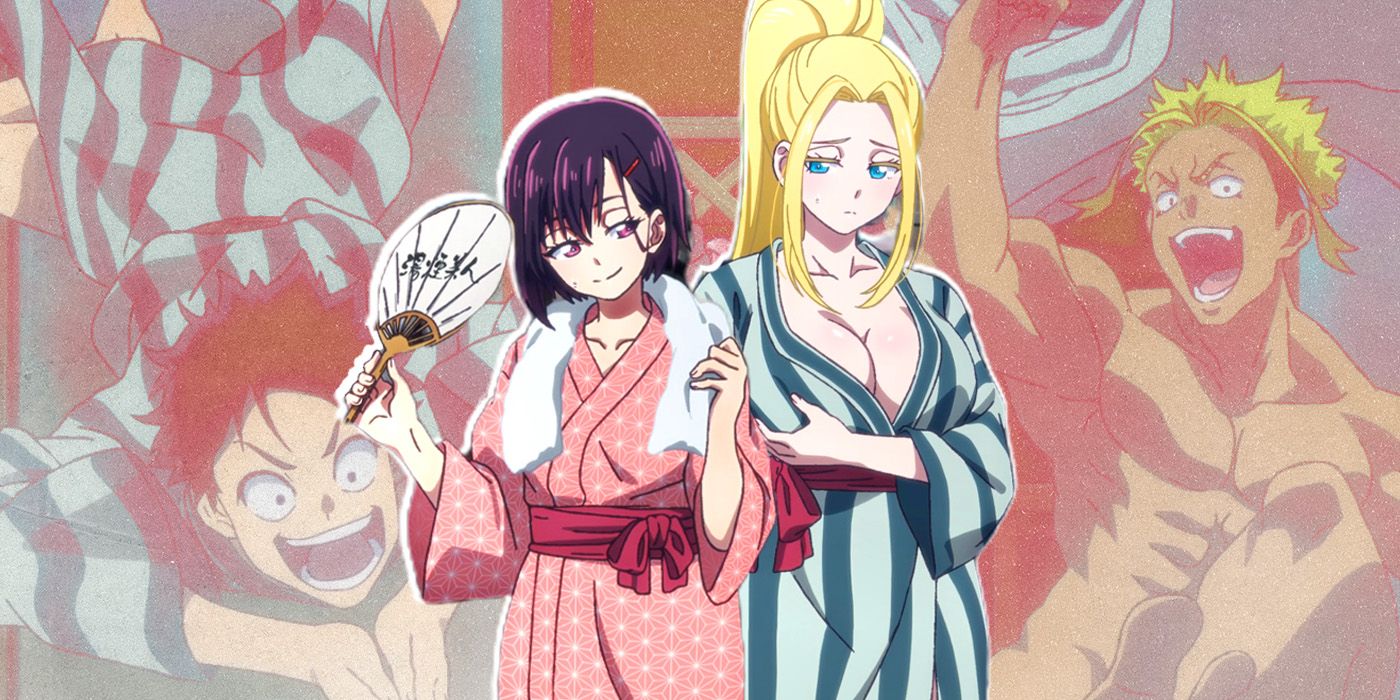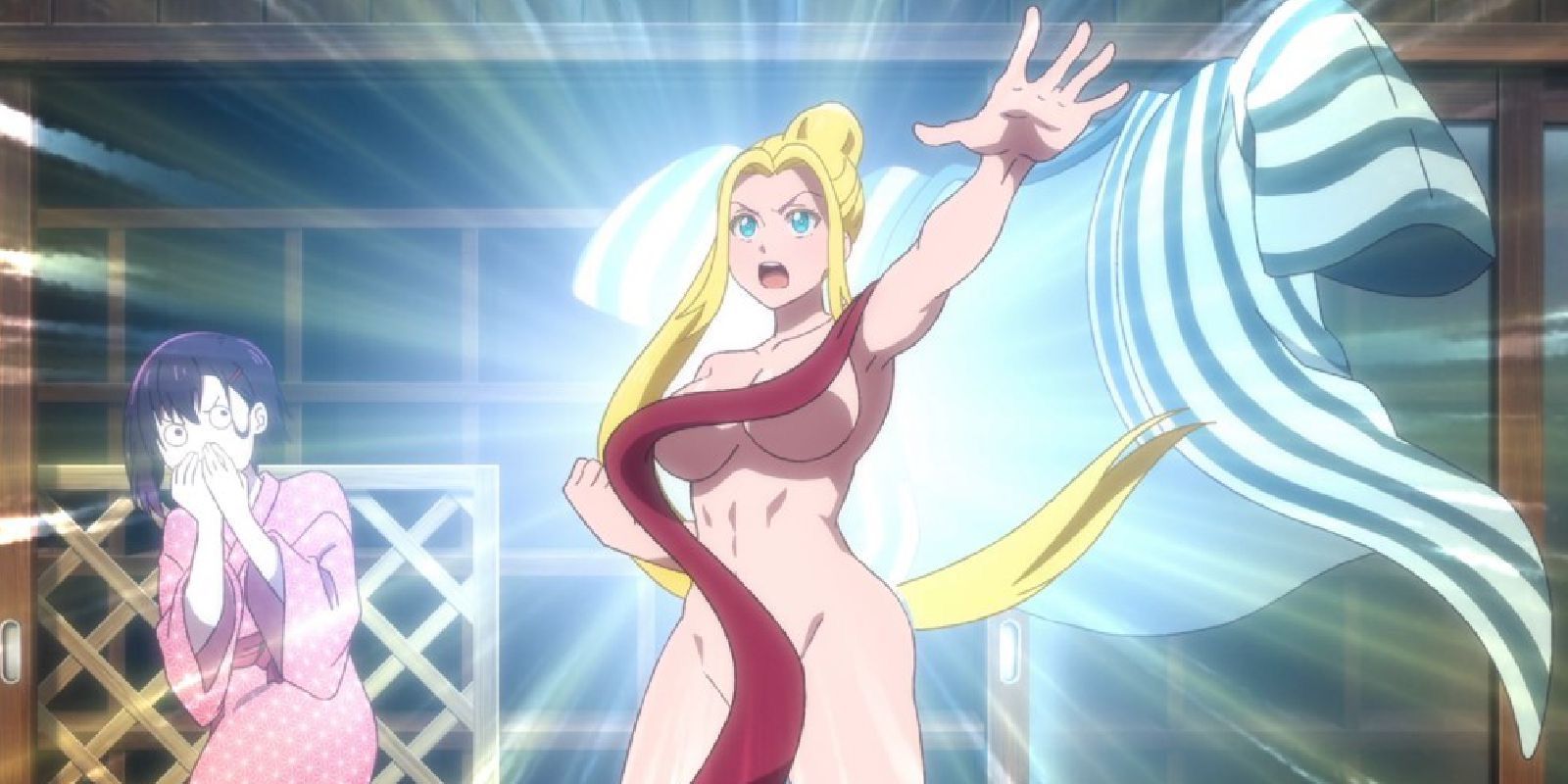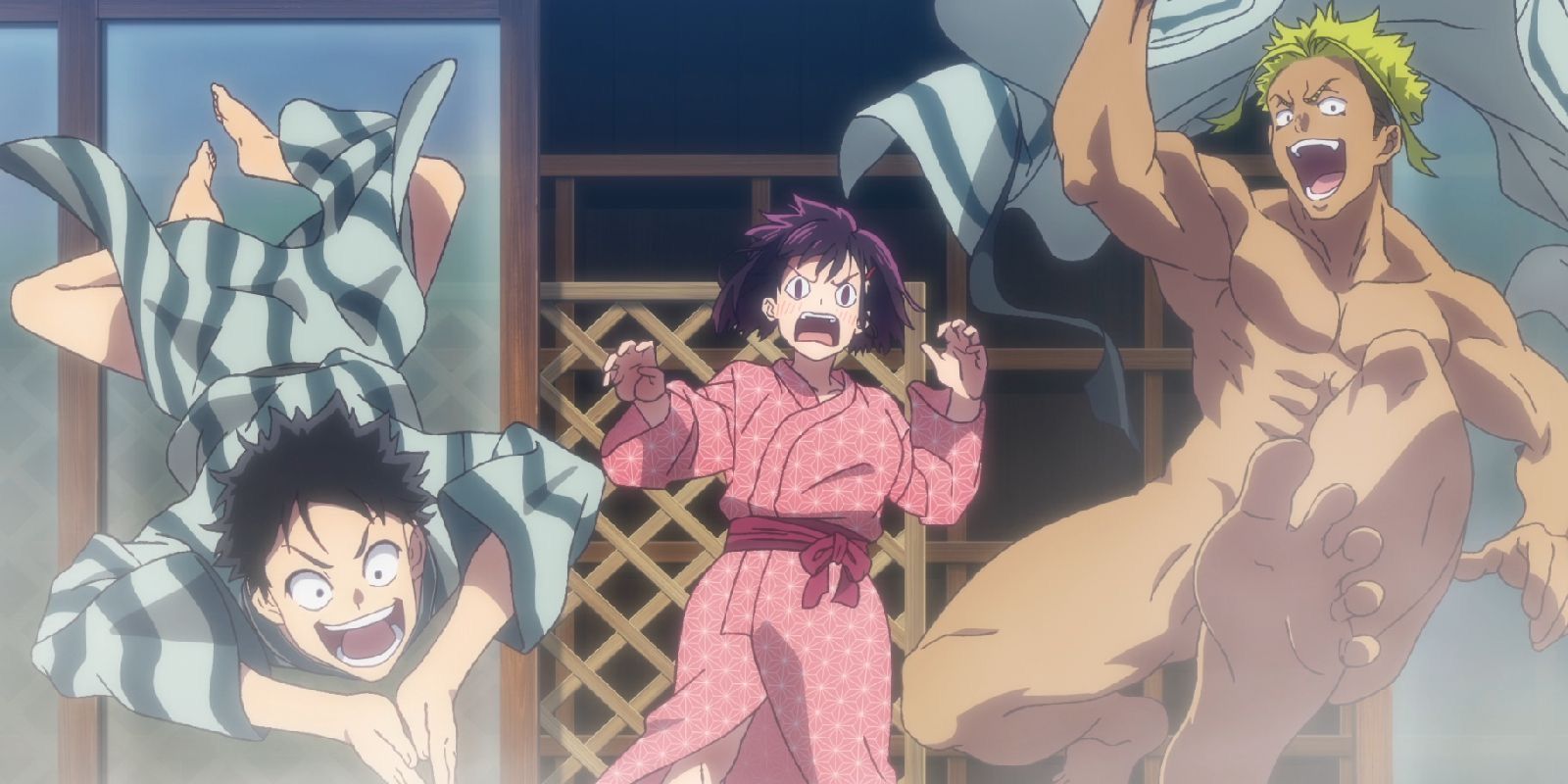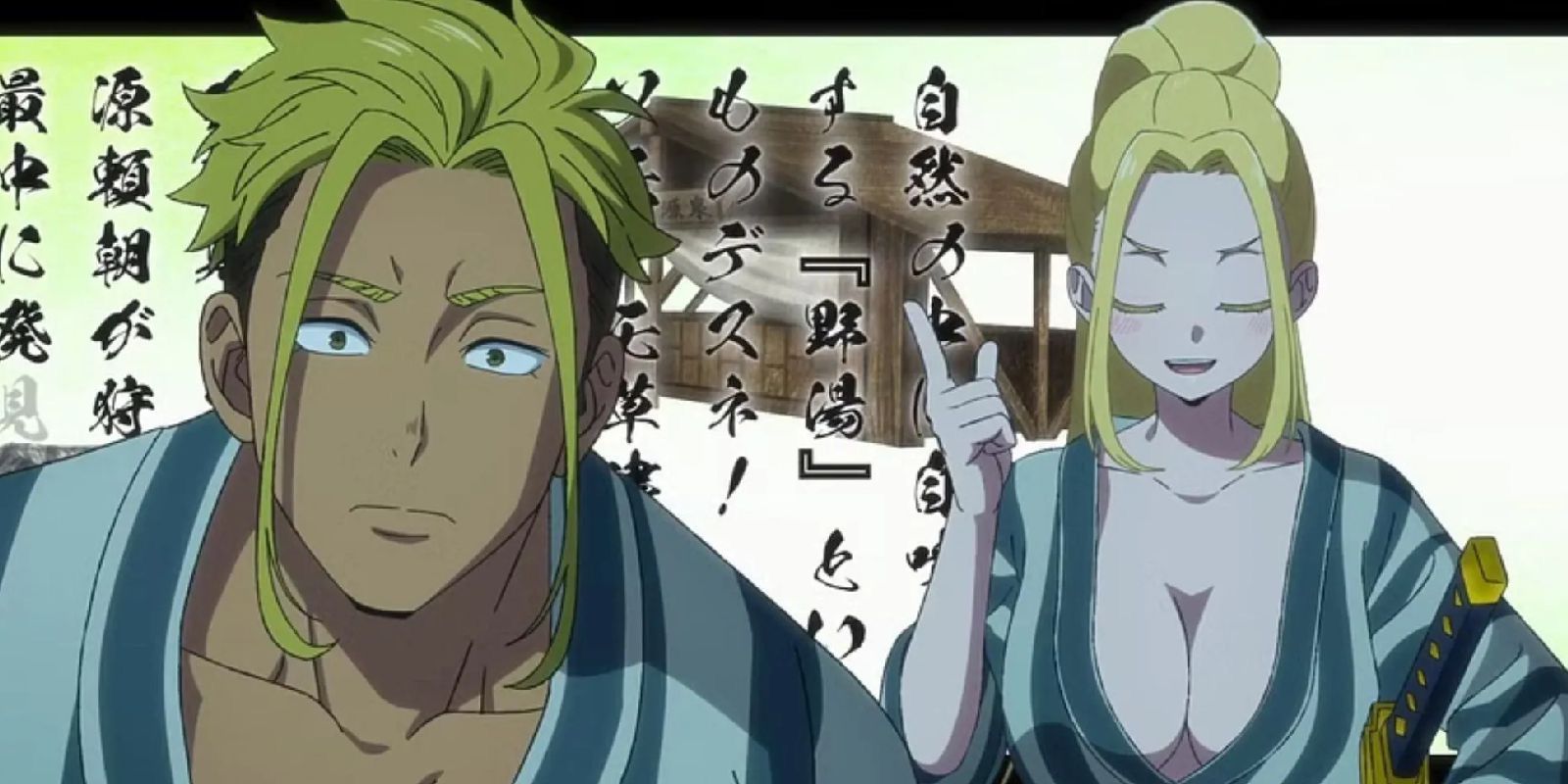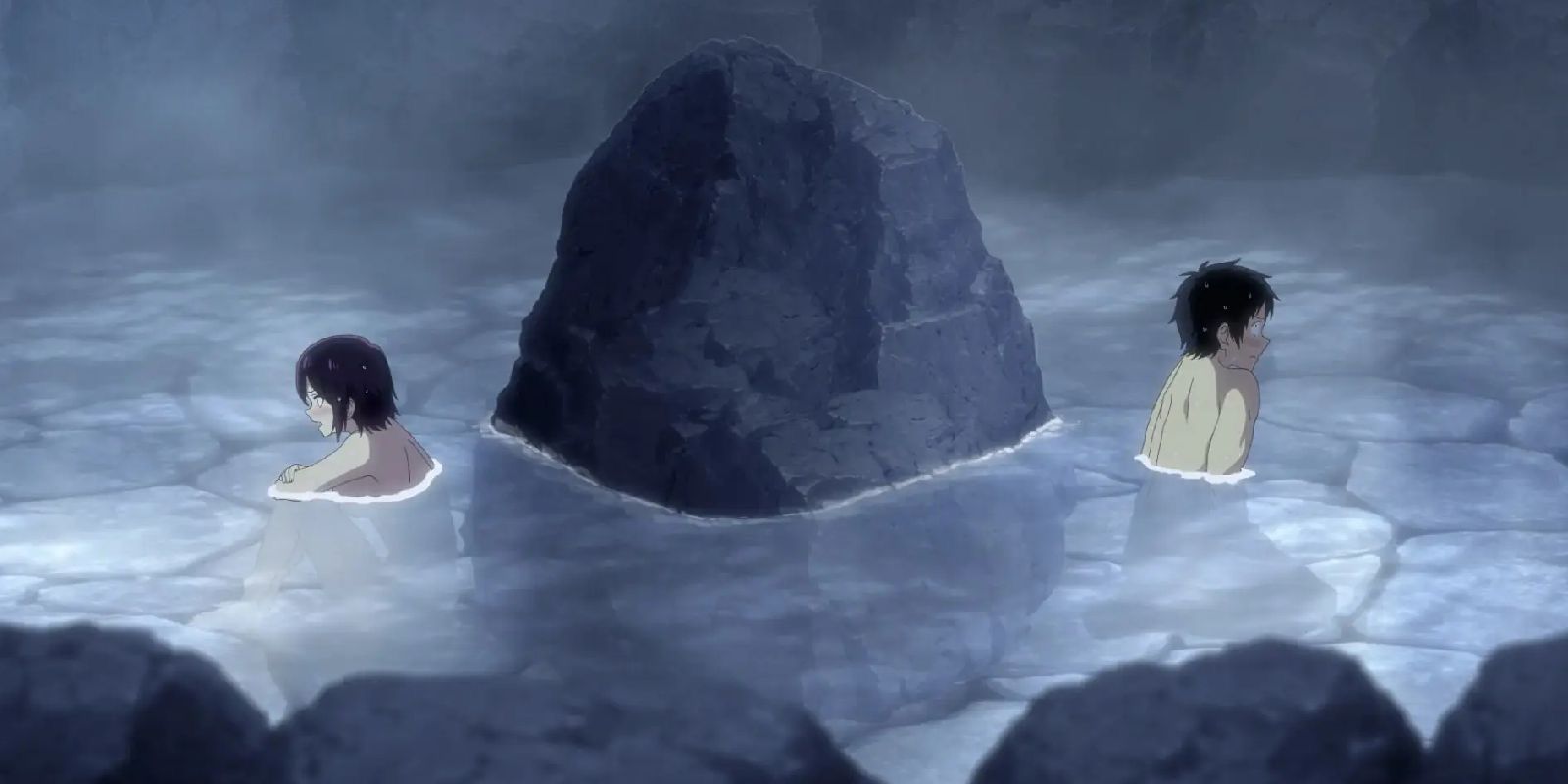Summary
- Zom 100's hot spring episode breaks the mold by giving its characters meaningful growth and development, rather than relying on cheap fan service.
- Unlike most series, Zom 100 approaches the hot spring episode intelligently, using it to address and satirize common anime clichés.
- The hot spring episode in Zom 100 serves as a catalyst for character relationships, allowing them to be their true selves and fostering genuine connections.
Nearly every anime has hot spring episodes. Some fans hate them, some love them, but it's common knowledge that they aren't necessary for the plot. Usually, hot spring episodes serve little more than pointless fan-service and filler, but Zom 100: Bucket List of the Dead makes its own hot spring episode make sense for once in a way that isn't awkward and cringe-worthy.
Zom 100's use of the hot spring episode is interesting on multiple fronts, and it's not just taken for granted as it is in other series. Zom 100 has full awareness, and even uses one of its characters to address the anime cliché head-on. Instead of using nakedness and nudity in all the most crude and trivial ways, Zom 100 has its characters lay themselves bare in a manner that's equally humorous, emotional, and natural.
Hot Spring Episodes Are A Warn-Out Trope That Most Series Should Avoid
In modern anime, hot spring episodes tend to have no place in most self-aware series. The inherent fan service and ridiculous situations engrained in hot springs episodes rarely fit in a more serious story, and would be better reserved for fan fiction that resigned to the darker parts of the internet. At their worst, hot spring episodes force the viewer into a voyeuristic position on the characters of the show, making characters engage in absurd scenarios that can even damage their standing with fans.
Zom 100 is aware of this though, and approaches the hot spring episode with a level of intelligence not prevalent in many shows. Where most series' hot spring episodes consist of little-to-no story arc other than whatever excuse they employ to put the characters in precarious situations, Zom 100 applies the hot spring to its story in a way that gives it substance. The hot spring in Zom 100 never feels forced or overly embarrassing for its characters, and when it does, it's clearly done entirely for the comedic relief while still retaining a base level of respect for the characters. Instead of using it as cheap fan service, the hot spring is used to provide a much-needed moment of growth for Shizuka and Akira's relationship, and emphasize Kencho and Beatrix's personalities in a funny-yet-believable way.
How Zom 100's Hot Spring Episode Avoids Being Pointless Fan Service
Zom 100 makes its living by tackling common clichés in both Eastern and Western media, and the hot spring episode is just the latest trope subject to its critique. A common act in many hot spring episodes is the men trying to creep on the women, but Zom 100 doesn’t even acknowledge this. Instead, it opts to have Kencho and Akira outwardly make advances which are turned down by Shizuku. As lecherous as the two are, it's clearly done in a comical manner that is entirely more healthy than how most series tend to set up the dynamic.
The hot spring in Zom 100's story is relevant. The concept of not being able to bathe for extended periods during a zombie apocalypse is entirely valid. Additionally, Kencho's excessive nudity throughout the series has pretty much already desensitized fans to nakedness in the show. Finally, each character displays a unique relationship to nudity that makes sense for their personality.
Zom 100 retains at least one trope from other hot spring episodes when it forces the group to have to bathe in the same hot spring because the women's side is out of order. It uses this very obvious gag to poke fun at hot spring episodes, and then build on its own characters in the process. Shizuku, being the modest and reserved character she is, turns down swimming in the hot spring with the boys, but Beatrix has her own approach to the situation. In expressing how Europeans tend to be less modest than people in Japan, Beatrix is fully willing to dive in the spring with no qualms whatsoever. This also highlights another important part of Beatrix's character: her love and appreciation of Japanese culture.
Beatrix Reveals the True Origins of Hot Spring Episodes in Japanese Media
Beatrix's otaku nature at least partially explains why she is so excited to jump in the hot spring even with the boys present: she is just overly enthusiastic about all things Japanese and anime related. She represents the complete antithesis of the traditional female anime character who is angered as the men try to peep. In taking on an active role and being assertive, Beatrix inadvertently takes all the power away from her cat-callers (in this case, Akira and Kencho) and becomes something of a feminist symbol for a brief moment.
Beatrix's overly enthusiastic interest in Japanese culture has also led her to retain a lot of useless information about Japan, but at least some of it is put to use in Episode 8 when she describes the true reason behind why hot spring episodes are so prevalent in Japanese Animation. She explains how natural hot springs are numerous around Japan, and have caused entire towns to be built up around them. Due to how common and popular they are in Japan, it's only sensible that hot springs would emerge as an integral part of Japanese popular culture and media, including anime.
The need for Zom 100 to have Beatrix explain this aspect of Japanese culture comes off as the series' way of acknowledging the troubling history of hot spring episodes in anime. Beatrix is a character that embraces even the most questionable aspects of anime because she is a super fan. This allows Zom 100 to play with aspects of anime that have always been called into question by critics such as fan service, and use them as obvious comedic relief.
Zom 100's Hot Spring Episode Is Far From Filler
Zom 100's hot spring episode is not filler, and actually does a lot to move the story and development of its characters forward. The episode begins with Akira discussing the notion of "mindfulness" with Shizuka and Kencho, to which Shizuka explains that it's about "immersing yourself in the present, and freeing yourself from the past and future." This is ultimately a main theme of Zom 100, and as Kencho suggests, Akira is "already there."
Even though he's already there, Akira is constantly on a journey to remain there as well, and that's what his bucket list is all about. It's always about the journey and never the destination, and every time Akira reaches said destination, he has to be forced away from it in order to remain present. This dichotomy between the journey and the destination is also present between the first and second hot springs the group finds in Episode 8. The first hot spring they stumble upon is a commodified spring in an industrialized town that was rundown and overrun by zombies, and the second hot spring the group finds at the end of the episode is up the in mountains among nature. Only in that second, more natural hot spring do they find peace: a move which is definitely indicative of Zom 100's overall goal of demonstrating how current social structures aren't conducive to the true freedom that leads to the kind of mindfulness Akira seeks.
It's in this natural hot spring that Shizuku and Akira's relationship is built upon in an important way, as the two can be their most genuine selves. The use of nudity in representing the shedding of one's skin in the sense of expressing a person's true self has been shown numerous times in Zom 100 up to this point, particularly through Kencho and Akira's friendship. This time around, Akira and Shizuku share their own true natures with each other in a genuine way, and it results in them getting even closer as friends. Hot spring episodes tend to have a way of objectifying the cast of an anime series, but Zom 100 uses its own hot spring episode to make its characters feel more human.

